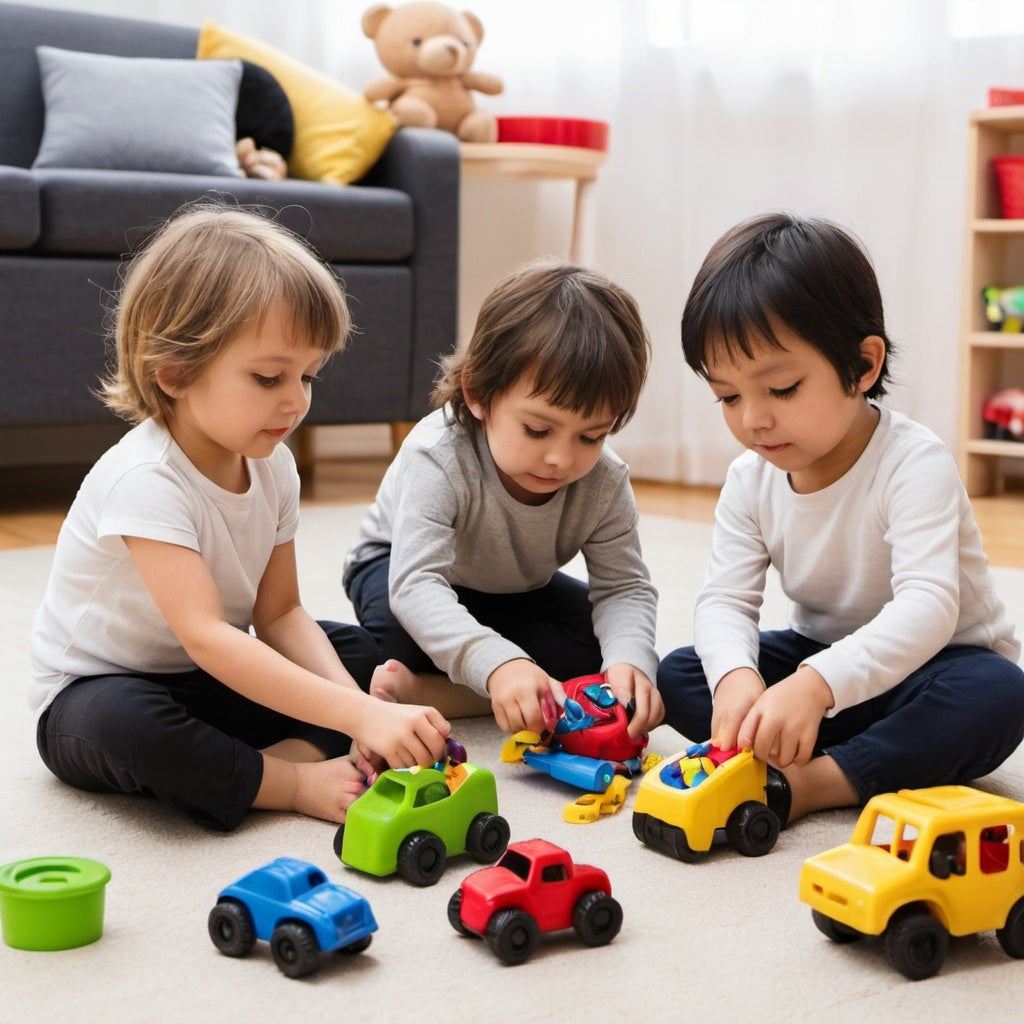
Encouraging Creativity: How to Foster Artistic Expression Through Toys
Share
In a digital age where screens often monopolise children's leisure time, nurturing creativity and artistic expression holds significant importance. As parents, it falls upon us to cultivate our children's imaginations and offer them avenues for exploring their creativity. A particularly effective method is through the careful selection of toys that not only inspire artistic expression but also encourage open-ended play.
Toys transcend mere entertainment; they serve as instruments for learning and development. By opting for toys that stimulate the senses and facilitate free exploration, we can help children unlock their innate creativity and express themselves in myriad ways. The first step involves choosing toys that are open-ended, allowing for multiple uses and imaginative play. Building blocks, play dough, and art supplies like crayons and paint are exemplary choices, enabling children to concoct stories, construct structures, and express themselves artistically.

In addition to selecting appropriate toys, it's essential to provide a diverse array of materials for artistic expression. Stocking the play area with various items such as paper, scissors, glue, fabric scraps, recycled materials, and natural objects like leaves and stones encourages experimentation and innovation. This accessibility to different materials empowers children to explore their creativity in novel and exciting ways.
Moreover, creating a nurturing environment where children feel encouraged to explore and experiment with their creativity is paramount. Offering praise and encouragement for their efforts, regardless of the outcome, fosters a growth mindset that esteems process over perfection. Encouraging children to make mistakes and learn from them instils resilience and a willingness to embrace challenges.
Limiting screen time is another crucial aspect of fostering creativity. While technology can have its merits, excessive screen time often stifles imagination and creativity. Establishing boundaries on screen time and promoting alternative activities that facilitate hands-on creativity, such as drawing, painting, and building, is essential for nurturing artistic expression.
Furthermore, leading by example is instrumental in nurturing children's creativity. Demonstrating creative behaviour through engaging in activities such as painting, writing, gardening, or crafting not only models creative pursuits but also involves children in the process, illustrating that creativity is a lifelong journey.
Providing opportunities for creative play by creating dedicated spaces in the home and celebrating children's creations further reinforces their confidence and self-esteem. By displaying their artwork prominently and acknowledging their creative achievements, we validate their efforts and encourage them to continue exploring their creativity.

In conclusion, by adhering to these strategies and furnishing children with the appropriate toys and environment, we can nurture their creativity and foster their development into imaginative individuals. Let us embrace the power of play and encourage our children to unleash their creativity through artistic expression, for the world is a canvas awaiting their unique vision.
